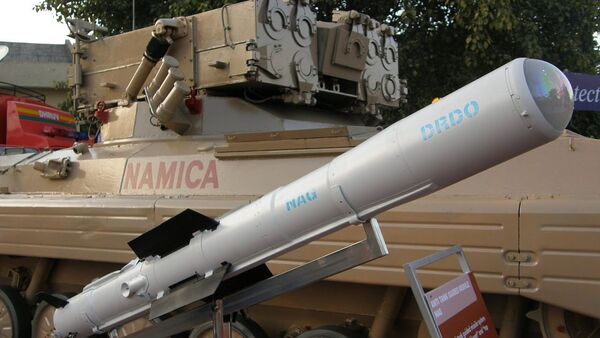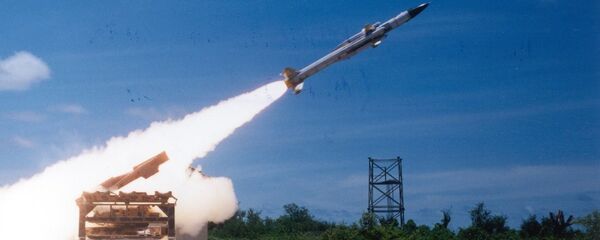New Delhi (Sputnik): Indian defense scientists have finally solved a problem that had been delaying the induction of the locally-developed Nag missile, dubbed as one of the most advanced anti-tank weapons in the world, into the country's armed forces.
READ MORE: Russia, India Engaged in Talks on 5th Generation Fighter Jet — UAC
On Sunday, the Indian Defense Ministry said that the HELINA (helicopter launched Nag) missile was successfully flight tested from an army helicopter in Pokhran. The weapon system was tested for its full range of seven kilometers.
Indigenously developed Helicopter launched Anti-Tank Guided Missile ‘HELINA’ was successfully flight tested in Pokhran, yesterday. The weapon system was tested for its full range. pic.twitter.com/2O7z6bYmgm
— ANI (@ANI) August 20, 2018
"The missile is guided by an Infrared Imaging Seeker (IIR) operating in the Lock on Before Launch mode. It is one of the most advanced Anti-Tank Weapons in the world," a Defense Ministry statement reads.
READ MORE: India Saves Its Foreign Reserves Over $5 Billion With Homegrown Akash Missiles
The anti-tank guided missile can be launched from both land and air-based platforms. The strike range of the land variant and air version of the missile is up to 4 km and up to 7 km, respectively.
The DRDO has been working on the Nag missile since 2009, spending approximately $47 million on its development.



